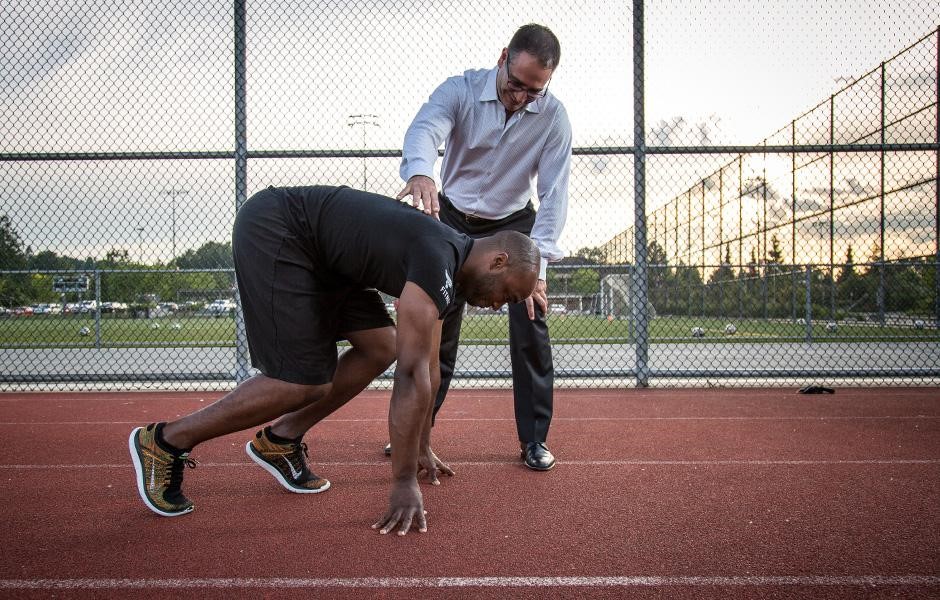
When I was first getting into the fitness industry 20 years ago, if someone would have told me that I’d eventually become known as an expert in conditioning and build an online business, I’d have thought they were crazy.
Don’t get me wrong—I knew plenty about strength—but I knew next to nothing about conditioning. I didn’t even own a computer or know that mixed martial arts was a real sport.
My career has had a lot of unexpected twists and turns, but I’ve been able to build a successful business doing something I’m passionate about and truly enjoy while helping thousands of people get better results and improve their fitness along the way.
Over the past few years, I’ve had a lot of coaches ask me for advice on how to take the next step in their coaching careers. To figure out how to answer their questions, I’ve spent a lot of time thinking about how I got here in the first place. What I want to share with you is the single most important lesson I’ve learned along the way:
The truth is that if you want to be successful in fitness; whether that means helping more people, working with the best teams, making more money, or just getting better results for yourself— there is just one thing that really matters.
Do this one thing, and everything will eventually come together. Don’t do it, and you’ll never achieve the success that you’re truly capable of.
The one thing you have to do for fitness success (Hint: It’s not bench pressing “x” amount of pounds or making your clients sweat)
If you want to rise to the top of your profession and get your clients the life-changing results they want and deserve, you have to strive to become a well-rounded coach, not just another trainer.
What do I mean by that? Let me explain.
When I first opened my gym back in 2003, I knew how to get people strong, but that was about it. To be honest, I thought that’s all I really needed to do. When people came to my gym, regardless of what their goals or abilities were, I saw it as my job to make them stronger.
In 2004, everything I thought I knew about being a good trainer changed when a fighter named Ivan Salaverry walked into my gym and asked me if I could train him for a K-1 fight. At the time, I didn’t even know that K-1 was kickboxing, but of course I agreed to train him anyway.
I figured why not? All I had to do was make him stronger. I knew how to do that—or at least I thought I did.
When being strong isn’t enough (Or, how getting humbled taught me a lot about what I didn’t know)
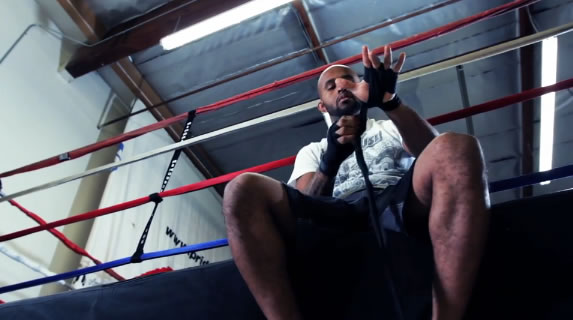
I quickly found how just how wrong I was when I decided to try combat sports myself. Face down on the mat, gassed out after just 30 seconds, I quickly realized why they call it strength AND conditioning.
I was strong—much stronger than most of the fighters—but without conditioning, my strength didn’t mean anything.
In that moment, I realized that I had a choice to make: I could keep being a trainer and stick to what I knew, making people stronger; or, I could start my journey as a coach and accept that I had no idea what I was doing on the conditioning side—and start doing something about it.
You see, what I’ve found in fitness over the years is that there are generally two kinds of people, coaches, and trainers…
Trainers can take you through a workout and make you sweat. They don’t really write training programs that help you progress long term, but they are always throwing in new exercises and no two workouts they do are ever the same.
They will tell you about their own style of training and why you should be following it too. They are often energetic and enthusiastic in the gym, but they’d rather spend time following fitness celebrities on Instagram than reading research papers on the autonomic nervous system and learning about stress.
And while this may be an effective way to entertain clients in the short term, it’s not enough to be the best, most effective coach you can be and get your clients the long-term results they want and deserve.
The coaching mindset: Get your clients the results they really deserve and become the go-to professional in your location or niche
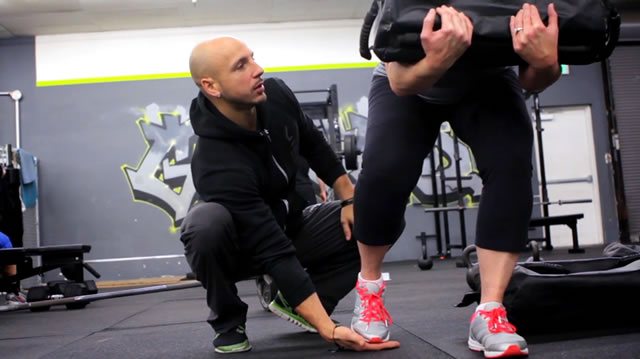
Coaches, on the other hand, spend time assessing each person as an individual and are always looking for more effective methods, rather than just new exercises. They’re willing to spend hundreds, even thousands of dollars to fly across the country to learn from anyone they think they can help make them a better coach.
Coaches recognize how amazingly complicated the human body is and that studying it is a never-ending journey. Trainers pick up fitness magazines to look for new workouts to try.
Trainers stick with what they know. Coaches will always tell you how much more they have to learn.
The biggest difference is that trainers see their jobs as taking people through a hard workout. Coaches know the real key to success is figuring out how all the pieces of the fitness puzzle fit together so they can deliver better results to everyone they work with.
There are far more trainers than coaches in the fitness industry, but which one you choose to be is completely up to you. Even if fitness isn’t your profession, you still have to train yourself and choose the path you’re going to take: trainer, or coach?
The 8 keys to coaching success in fitness
Over the years, I’ve invested more time and money studying the art and science of fitness than I could ever count. Along the way, I’ve come to realize that there are essentially 8 areas of fitness that every coach needs to become proficient in to be successful.
While you don’t have to become a renowned expert in each of them, you do have to develop beyond a basic level of knowledge. Most importantly, you have to understand how each piece relates to what people need to be doing inside and outside of the gym to reach their goals.
While there’s no magic shortcut to any of this, I want to help save you time by providing an overview of what these 8 areas are, along with what I think are the most importing things you need to learn in each. I also want to share some of my best, go-to resources; the places where I turn to myself when I need to learn more.
If you’ve made the decision to be a coach and are committed to being successful, whatever that may mean for you, giving you the following blueprint is the best way I know to help you achieve that. It’s the same one I’ve used to become a world-renowned coach and build a million dollar business.
1. Biology 101: How we’re hardwired for survival

Thinking that subjects like exercise physiology, anatomy, or biomechanics are the starting point of an education in fitness is a mistake. The real foundation of fitness is biology. Why? Because biology is the key to understanding our most basic instincts—the ones that drive our daily behaviors.
Without a basic understanding of biology and how we’re all hardwired for survival, it’s easy to miss the big picture of what training really is: a form of stress. The importance of this principle was something I was introduced to and focused on very early in my career, and it’s one of the biggest reasons I’ve always approached fitness and training from a different mindset than most.
You can see the best example of why it’s crucial to examine training as a form of stress by reading my recent article on Why our obsession with high-intensity has failed us all.
The message at the core of that article—the “Constrained Model of Total Energy Expenditure”—is something I originally came across in Cell, one of the leading biology research journals.
Biology is at the very heart of fitness and performance because it provides the big picture of how our bodies fundamentally work and this makes it absolutely essential to the education of every coach.
- My go-to biology resource: Without question, the place that every coach should start their education is with the work of Robert Sapolsky, an absolutely brilliant and entertaining professor at Stanford. I suggest starting with this book, “Why Zebras Don’t Get Ulcers” and then progressing through his video course (filmed from his actual class at Stanford) on Human Behavioral Biology.
2. Mental performance: The real key to driving behaviors and changing habits

Every coach knows the importance of the mental side of the game, in both sports and fitness, but most don’t have a clue how to coach and develop the mental skills necessary for success. In my experience, people don’t fail to reach their goals because of their physical skills or abilities, but because of their mental limitations.
Mental performance and mental skills are crucial because they are what ultimately drive our behaviors, habits, and routines. This includes our ability to develop the right mindset, build self-awareness and focus in the moment, stay disciplined and have self-control, use imagery and visualization, inspire leadership, and manage our time well and stay organized (to name a few).
All of these abilities are vital because they are what allow us to consistently perform at our best and utilize our full physical potential. Without these skills, people often fail to achieve because they don’t know how to drive the right behaviors and habits—the ones that ultimately lead to success rather than failure.
Just like you can train a muscle get bigger and stronger through physical training; you can also train your mind to be more focused, resilient, confident, and efficient through mental training.
Despite recognizing the importance of the mental side of fitness and performance, few coaches have invested the time and effort into being able to effectively coach these skills.
You can’t expect people to develop these abilities on their own and they are just as important (often even more important) as things like strength, power, conditioning, movement, etc. The ability to coach the key mental skills is something I’ve seen over and over again that separates the great coaches from everyone else.
If you want to be a world-class coach, you absolutely cannot ignore the mental side of training.
- Where to learn the mental side of the game: Despite its importance, there are not many great resources in this area written specifically for coaches. Textbook sports psychology is definitely not the place to turn. Most academic resources are seriously lacking in real-world application and more theory than anything else.
My recommendation is to start with the work of Brain Cain. I’ve personally known him many years and he’s worked extensively with countless high-level teams, coaches, and athletes to help them develop the mental side of the game.
3. Conditioning & energy systems: Performance, recovery, and longevity
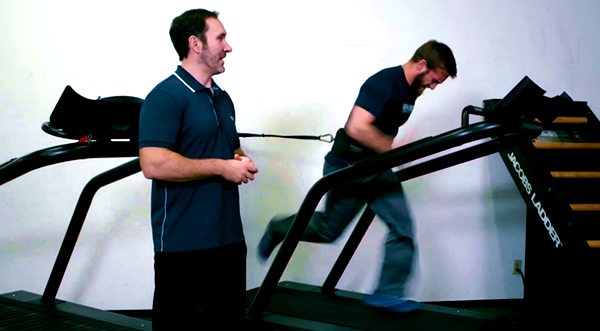
Over the years, the more I’ve learned about conditioning and energy systems, the more I’ve come to appreciate just how intimately connected they are to every area of our lives. Though a lot of people only talk about energy systems and conditioning as they relate to endurance on the field or in the game, the reality is that they play a far bigger role in all areas of fitness.
Conditioning is not only a hugely important component of recovery and the ability to handle higher training volumes (and thus make faster progress), it’s also intimately connected to our overall health, wellness, and longevity. This is something I discussed thoroughly in my article on How conditioning may save your life.
Regardless of whether you’re a coach or just someone who wants to look and feel their best, conditioning plays a vital role and is something you absolutely must understand and know how to develop. Without this knowledge and skill set, it’s simply impossible to consistently perform at the highest levels, stay healthy, and turn fitness into a healthier, longer life.
Although there are many pieces to energy systems and the conditioning puzzle, once you know the basics of how they all fit together, writing and coaching effective conditioning programs is much more straightforward than people often think.
Creating safe, effective conditioning programs doesn’t have to be incredibly complicated, but you do to have proper training from a trusted source, just like with any other aspect of coaching.
If you don’t feel confident in your ability to build personalized conditioning programs together, investing in learning the art and science of how to do this is one of the most important things you can to be successful in fitness.
- How to become a conditioning expert: Helping coaches see how to put all the conditioning pieces together and write world-class conditioning programs is something I’ve spent a good portion of my career doing.
If you struggle with understanding energy systems or feel like you’re just not as confident at helping people improve their conditioning as you are with other areas of fitness, my online Conditioning Coach Certification Course can help.
Opening again in November, get on the insider’s list and save $200 by entering your name and email below. Spots are limited and are filled on a first come, first served basis.
4. Movement Training: Prioritizing quality over quantity
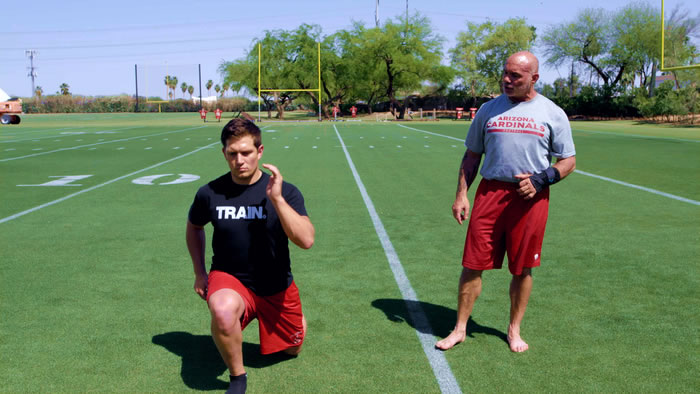
The big push to introduce movement-based training into fitness started in the early 2000’s and of course it continues to influence programs to this day. Though there is no doubt that thinking about training from a movement perspective represented a progression and an important step forward, what’s most often missing is the connection to the bigger picture.
Coaches have been given tools to evaluate basic movement patterns in low load, unweighted movements, but very few coaches have been taught how this does, or does not, translate into the real world. What’s most often lacking in training programs built around movement is how the way we move relates to stress and by extension, to fatigue.
In short, movement-based training has largely been taught in a vacuum that fails to integrate the principles of stress that need to be learned from biology and the tenants of conditioning that show us how fatigue influences the way we learn to move. This is an area that I talked about in this article, specifically.
Moving well is absolutely crucial to literally every area of fitness and performance and it’s an area that every coach needs to be well versed in. First and foremost, this means building a solid knowledge base in both biology and conditioning because they are such a big part of what drives the way that we move.
- The best movement experts I know: Without question, the best people in the industry to teach you how to build movement programs that build on the right foundation are my friends Bill Hartman and Mike Robertson of iFast. They’ve put together a ton of great material at iFast University and they’ll also be contributing a new module to my upcoming conditioning certification on how to use breathing techniques and specific movement patterns to help the body move more efficiently so that it can handle stress more effectively.
5. Strength and Power: It’s about more than just the numbers
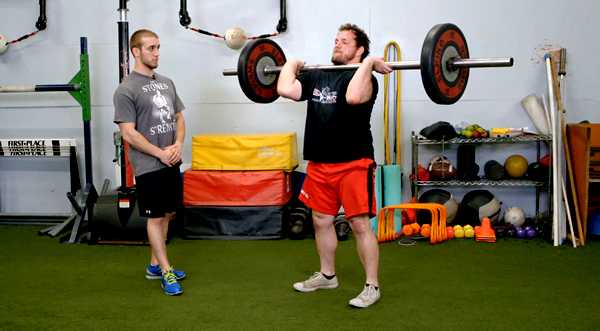
Let’s be honest: strength and power is the area that strength and conditioning coaches devote the most time to learning and coaching. Most people in the fitness industry, myself included, grew up lifting weights and reading muscle magazines.
It should be no surprise then, that when so many coaches design training programs, the first place they start is with strength training.
While there’s nothing wrong with this, per se, it’s important to understand and view strength and power within the context of movement, conditioning, and stress, first. When coaches fail to program from this perspective, they tend to produce athletes that have more “weight room” strength than anything else. Or even worse, they produce athletes, or clients, that end up with poor movement and nagging injuries.
Strength and power are hugely important qualities, but the ability to be strong when and where it matters most is what really counts. That kind of “real world” or “sport specific” strength requires a lot more than just lifting weights. In other words, to develop real strength—the kind that translates into performance and makes people more resistant to injury than prone to it — you need to know a lot more than how to teach someone how to squat.
- Where to learn to develop strength that matters: Because strength and power are ultimately nothing more than expressions of movement, against either high loads or at high speeds, it’s crucial to fully understand movement and basic biomechanics first.Once you’ve done that, there are quite a few good resources out there on building strength and power, but my favorite when it comes to sports-specific applications is the godfather of plyometrics himself, Yuri Verkhoshansky.His book on Special Strength Training is a must-read for coaches to learn how to develop game-changing, real-world strength and power.
6. Nutrition: Everyone is different (consistently)

If there’s one area of fitness that’s as polarizing as training itself, it’s nutrition. Everyone has an opinion about what the “best” diet is and what supplements people should, or shouldn’t, be using.
Good, effective nutrition relies on a few simple principles. It has to A) meet the basic requirements of calories, macronutrient and vitamins/minerals and B) Be something that the individual it was designed for will actually follow.
When it comes to nutrition, the most important thing isn’t knowing every little detail about metabolism or biochemistry, but rather knowing how to help someone put together a nutrition plan that they will actually be able to stick to. Nutrition is such a key component of fitness, regardless of someone’s particular goals, that doing nothing and letting people figure it out on their own should never be an option.
As a coach, you need to either develop the expertise it takes to help people put together a nutrition plan that works for them, or find someone else that can and partner with them. If you don’t do at least one of these things with each and every person you work with, you’ll be facing an uphill battle from the start and find it much harder to consistently help people reach their goals.
- Learning to help people find the right diet for them: Hands down, the best resource for adding the nutritional knowledge you need to up your game is the industry leader, Precision Nutrition. The company was founded by a colleague I’ve known for many years, Dr. John Berardi, and they’ve got the best, proven system to teach coaches a habit-based approach to nutrition that works.Dr. Mike Roussell is another trusted friend and a great nutrition resource as well. He’s already contributed some articles to 8WeeksOut and I’ll be working with him add more in the coming months.
7. Technology: How to scale personalization
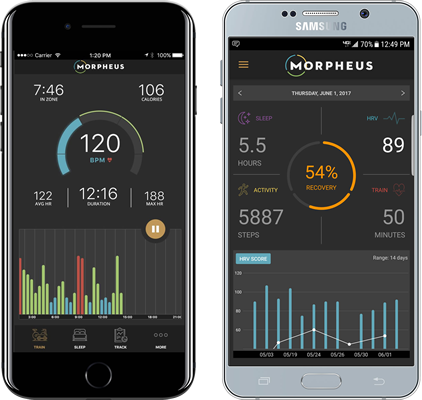
Technology is an area that coaches seem to either fully embrace or completely reject. I still know a lot of very good, successful coaches that write out all their workouts by hand on sheets of paper. The problem is that they’re only able to do this for a very small number of athletes, and they can only get away with it because that’s all they want to work with.
When utilized effectively, technology should be viewed as a tool to help you deliver the same level of personalized coaching to multiple people as you could to just one. It helps you gain valuable insight into how well people are responding to your programs and ties their lifestyle outside the gym to what they need to be doing inside the gym.
In short, technology should be primarily viewed as a tool to help give you more information about people on which to base your coaching decisions. What it shouldn’t be used for, on the other hand, making decisions for you, or collecting data just for the sake of collecting data.
If you’re afraid of technology and have no basic systems in place to write, track and manage programs, delivering high-quality, personalized training to more than just a few people is going to be next to impossible. While you don’t need to spend hours each day on a computer or have a PhD in data analytics, if you want to be successful in fitness, you need to learn to embrace technology and use it to make you a more effective coach.
Becoming a high tech pro: If you’re starting from scratch, the first thing to do is either learn how to use MS Excel (I recommend taking a video course on Coursera) or finding a good online platform that meets your needs. There are tons of them out there, but Fitbot is probably the easiest to use.
When it comes to helping people improve their lifestyles by putting all the pieces together, there’s nothing out there that compares to my own platform, Morpheus. The next Morpheus Recovery bands will be shipping soon, click here to request an invite to be notified when they become available again.
8. Business: The Key to Financial Freedom

In my experience, the business side of fitness is something that makes a lot of coaches uncomfortable and it’s one of the main reasons a lot of them struggle to be financially successful. They don’t like talking about money or selling their services, and they put far more effort into learning how to write more effective programs than they do learning how to build a more productive business.
Every coach loves to believe that if they become better coaches, their business will just magically grow. That’s certainly what I believed when I opened my gym at 23 years old. I had already worked with a ton of NFL players and naively, I thought like this fact alone would lead to a flood of people walking in the door and throwing money at me to train them.
Here’s something I found out the hard way: that’s just not how it works. Yes, you need to be a great coach to be successful, but if nobody knows about you because you don’t know how to build a business, you’ll always struggle to achieve the true financial success you’re looking for. Word of mouth only goes so far.
Before I learned this lesson and dug into building the knowledge and skills it takes to go from having a job to having a company, I worked a ton of hours for what amounted to very little money after all my gym expenses were paid. I’ve seen this happen over and over again.
There are a lot of great coaches out there that struggle financially because they’ve never invested in truly learning how to build a business. Look, the reality is that it’s a totally different skill set than being a coach and it takes time to learn. If you want to have real financial success and build a scalable business that does a million dollars a year or more, then the only way to do it is to dig in and get to work.
- Where to learn how to build a 7-figure fitness business: Just as there are many different pieces of the fitness puzzle, there are also many elements that make up a successful business. That said, you need to start with the basics, regardless of the type of fitness business you want to build.To point you in the right direction, I’ll share the two books that got me started by helping me see the bigger picture of business.The first is called “The E-Myth” by Michael Gerber, and it helped me realize that without systems and organization, I couldn’t have a real business capable of scaling.The second was Dan Kennedy’s “No BS Guide to Direct Marketing.” Dan Kennedy is a marketing legend and this book gave me a much better understanding of the difference between advertising (what huge companies do) and marketing (what I needed to do).
Summary
It’s much easier to be a trainer than it is to be a coach. That’s where there are so many more trainers out there than there are coaches.
While “good enough” is all some people strive for, it takes a lot more than that if you want to build a rewarding career and be truly successful in the fitness industry.
If all you want to be is “good enough” you’ll never become a world-class coach and create lasting change in your clients’ lives. You’ll never be able to have a real impact, or contribute to the fitness industry in a meaningful way. You’ll also struggle to build a real business and you’ll likely just have a job as a trainer with long hours and low pay.
Why? Because there’s nothing to differentiate you from every other trainer out there. If all you are is someone that can take people through a workout and make them sweat, you’re competing with thousands of other trainers that can do the exact same thing.
If you want to truly make a difference—in your clients’ health, in the industry, in your bank account— you have to face the areas of fitness that you struggle to understand and feel uncomfortable with head-on. You have to accept them as a challenge, an opportunity to put in the work and improve yourself.
And, ultimately, you have to embrace the fact that you’re probably going to suck and struggle and it’s not going to be easy. At least at first.
But just as I grew from tirelessly researching, asking questions, and testing theories about conditioning after getting my ass kicked in MMA, you’ll do the same. You’ll learn and become better, more well-rounded and each step forward will lead to another.
Just as you have to be consistent and take it day by day when it comes to improving your fitness, the same thing applies to becoming a better coach. It took a lot of time and effort, and I’ve definitely had my share of failures and frustration over the years (and I’m sure there’s more of both ahead), but investing in myself and developing as a coach has been the best investment I’ve ever made.
If you’re committed to being successful and reaching your goals in the fitness industry, whatever they may be, then making the decision to become a coach and get to work is the only way I know to get there. To help you along the way, I’ve created a single page PDF “cheat sheet” with links to my best, go-to resources in each of the 8 areas that being a coach is all about.
